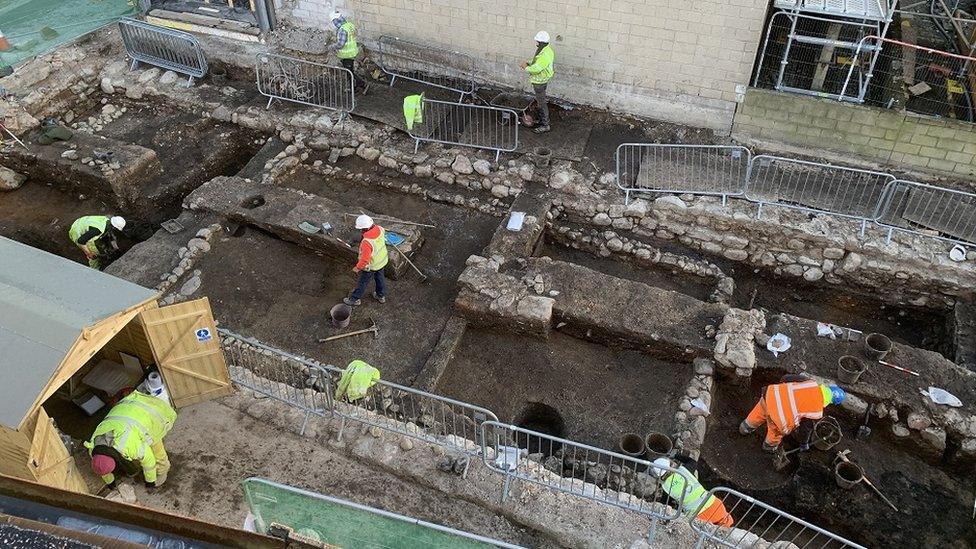'Heart' of medieval town revealed by building work
- Published

Archaeologists found medieval remains preserved below structures built in the 19th Century
Construction work has uncovered significant archaeological remains in the heart of a medieval town that once stood in Inverness.
Evidence of an iron industry, including several smithing hearths used in making the metal, have been revealed at the city's 99 Church Street.
Artefacts include carved bone pins, medieval coins, iron tools and bronze ornamental objects.
The site was on the route of one of Inverness' earliest medieval roads.
Archaeologists said houses and associated local industry would have been built along this street from the late 12th Century.
Finds included coins
A carved bone pin recovered from the site
The remains were preserved below 19th Century buildings and revealed by new building work.
The site is situated within the general location of a 12th Century medieval church and Dominican Friary at nearby Friars Street.
The remains of a burnt structure at 99 Church Street
Archaeological investigations by AOC Archaeology have found two well-preserved, burnt-down wattle and daub medieval structures and later stone-built structures with internal walls, wooden floor joists and cobbled surfaces.
Archaeologists said this showed how the site was used again and again over centuries.
Lindsey Stirling, the archaeologist who supervised the excavations, said: "This was an amazing and rare chance to experience first hand these moments in time preserved after activities had ceased and buildings had been abandoned, and to see the overlapping of successive occupation."
Other artefacts found included medieval pottery
AOC Archaeology said the excavations had uncovered a level of preservation of archaeological materials that had not often been found in other Inverness city centre developments.
The dig was supported by funding from the developer Ark Estates.